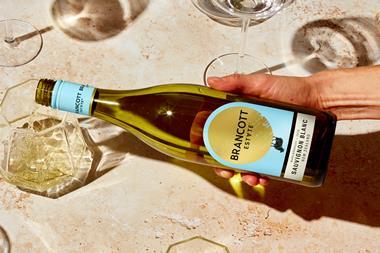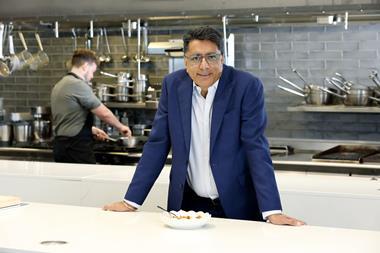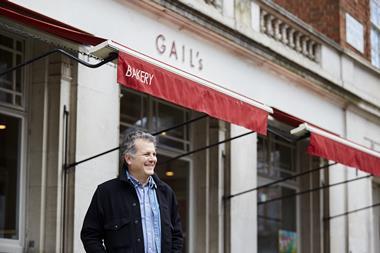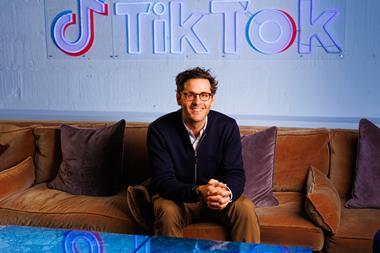After beer and cider was again refused a lifeline in last week’s Budget, Britain’s biggest brewer is making its own plans to inject life into the sector. And they involve a ladder. Nick Hughes speaks to Heineken UK MD Stefan Orlowski
It’s 11am and Stefan Orlowski is sitting on a bench in an empty Notting Hill pub holding a Bulmers.
Okay, so the drink is for photographic purposes only, but no one would blame the boss of Britain’s biggest brewer for turning to drink this morning. The day before, the Chancellor hit the already struggling sector with a 7.2% hike in alcohol duty.
The Australian born MD of Heineken UK wastes no time in adding his voice to the chorus of industry disapproval over George Osborne’s decision to retain Labour’s duty escalator until 2013. “On top of what’s happening with raw material prices, what’s happening with VAT and on top of previous excise increases, it’s disappointing to see the escalator retained,” he says.
Orlowski is frustrated at what he sees as an unhelpful preoccupation with the price of beer and cider. Its supposed link with binge drinking has not only resulted in the retention of the duty escalator, but also the forthcoming introduction of a ban on below-cost selling and a call for further restrictions to advertising.
If cheap beer were really to blame for the nation’s excessive drinking, you would expect beer sales to be on the increase. Yet volumes declined 3.9% year on year in 2010 (BBPA). That’s why it’s vital to inject value into the category, argues Orlowski.
Heineken has set out its stall to engineer value through the creation of what Orlowski calls a “price ladder” to more clearly differentiate Heineken’s beers and ciders and encourage an understanding that the category “isn’t all the same stuff at the same price”. The final goal, of course, is to encourage drinkers to pay more for their products and prevent the devaluation that heavy promotion has brought.
This will be achieved by delivering “different formats, different sizes, different product formulation, better in store activation and by bringing some life to the shelves,” says Orlowski. It’s also important to make the category “more approachable” and the beer aisles easier to navigate, he says. To that end, Heineken is working with retailers to change the layout of the beer fixture and “help consumers make choices for particular occasions”.
Offering a range of options for different drinking occasions is key to meeting consumer demand, explains Orlowski. He points to the Spanish beer market, where brewers have been given more freedom to communicate how a repertoire of beers, some high volume, some low, can fit within consumers’ lifestyles. One result has been the growth in alcohol-free beer, which now accounts for 10% of the Spanish market.
In the UK, communicating such a message will be more difficult. But Orlowski hopes the Responsibility Deal and Heineken’s sponsorship of the London 2012 Olympics and Paralympics will provide a UK platform to talk more positively about responsible alcohol consumption.
Orlowski says Heineken will be working hard to fulfil its commitments to the government’s Responsibility Deal. The deal has been widely criticised by health lobbyists who claim the government is in effect allowing the industry to govern itself, but he rejects the argument.
“It’s very easy to take the cynical view”, he says, pointing to Heineken’s voluntary ditching of its White Lightning brand in 2009 to distance it from the ‘problem’ white cider category as an example of how the Deal should work. When other suppliers failed to follow Heineken’s lead, the government introduced a new definition of cider, requiring a minimum juice content of 35%, pushing some white ciders into a higher tax bracket.
This approach the carrot backed up, when necessary, by the stick is the guiding philosophy behind the Responsibility Deal. And it appears to be working. Not only did Heineken sign up to all seven common alcohol pledges, it also made two of its own pledges to distribute 11 million branded glasses showing alcohol unit information to the on-trade by the end of 2011 and to remove 100 million units of alcohol from its output by dropping the abv of one of its brands by 1% by 2013.
The latter pledge came on the back of the government’s decision to offer a 50% reduced duty rate for beers with an abv of 2.8% or less. Orlowski describes it as a “welcome move”, although he would have liked to have seen the upper band set at 3.2% to make reformulation of products “more achievable”. Even 3.2% is likely to be some way off the mark as far as the first reduction goes.
Experts believe that Strongbow would be a good candidate as its 5.3% abv off-trade bottles could be brought into line with on-trade levels of 4.5%. But while Orlowski promises exciting developments for the brand, he won’t confirm it’s the one that’s been earmarked.
All he’ll say is that Heineken won’t be affected (its global recipe is standardised). Over time, the average abv content of Heineken’s portfolio will fall, he adds. That’s not to say cuts will be made across the board. “It has to be a consumer proposition first,” he argues.
Of course, in delivering that proposition, it helps to have a roster of brands that as well as Heineken, Bulmers and Strongbow, includes Foster’s, John Smiths and Kronenbourg (which is set to benefit from new off-trade formats and more consistent brand communication this year).
However, says Orlowski, they still have to “earn the right to be a part of consumers’ lives”. He points to Foster’s sponsorship of Alan Partridge’s online series Mid Morning Matters as one way to achieve this. “It’s about engaging consumers with our brands,” he says. “People watch Partridge because it’s fun, not because we forced a banner into their email.”
And by doing so, they may also be tempted to climb Orlowski’s ladder.
Stefan Orlowski snapshot
Title: Managing director, Heineken UK
Career to date: A qualified barrister and solicitor, Orlowski began his career working for a commercial law firm in Australia before joining a private brewery investment group in 1992. In 1998, he became sales, marketing and distribution director for Zywiec, SA, Heineken’s Polish operating business, and from 2003 to 2006 was chief operating officer, first of Brau Union AG and subsequently of Heineken Central & Eastern Europe. He left briefly to work for an investment firm in Australia before returning as Heineken NV’s commerce director based in Amsterdam before being appointed MD of Heineken UK in July 2009.
Lives: Central London
Family: Married with two children
Hobbies: Playing tennis and watching sport (especially cricket).


















No comments yet